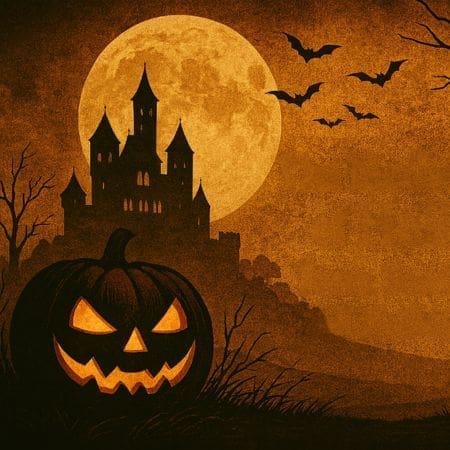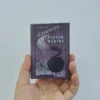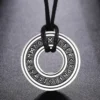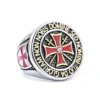
Introduction – Shadows of Autumn
As autumn’s chill settles across the land, the festival we now call Halloween takes hold with eerie delight. Ghostly tales, flickering lanterns, and gatherings in the dark feel timeless. Yet the roots of Halloween lie deep in medieval Europe, where superstition, faith, and folklore combined to shape a season of the dead that still influences our traditions today.
From Pagan Samhain to Christian All Hallows
Long before medieval Britain, the Celtic festival of Samhain marked the turning of the year. Celebrated on 31 October, it honoured the thinning of the veil between the living and the dead. Fires were lit to ward off wandering spirits, and rituals ensured protection for the long winter ahead.
When Christianity spread, the Church rebranded such practices into the feast of All Hallows’ Eve, followed by All Saints’ Day and All Souls’ Day. By the Middle Ages, these three days formed a sacred cycle. Instead of appeasing pagan gods, prayers for the departed were said, but the sense of closeness to the dead remained powerful.
A Medieval Calendar of the Dead
In medieval England and Wales, the year was punctuated with festivals. Harvest marked plenty, Easter symbolised renewal, and All Hallows offered remembrance. It was not merely a religious duty; it was a community event.
- 31 October – All Hallows’ Eve: Bonfires blazed, bells rang, and families gathered to protect homes from restless souls.
- 1 November – All Saints’ Day: A solemn celebration of holy figures, reinforcing the Church’s message of salvation.
- 2 November – All Souls’ Day: Prayers and masses for ordinary people who had died, binding the living and the dead in memory.
Together, these feasts formed what some historians call “a medieval festival of the dead,” echoing both Christian and older pagan customs.
Fire, Fear, and Rituals
Medieval villagers lived in a world of uncertainty. Disease, famine, and war were constant threats. It is little wonder that autumn rituals were both protective and symbolic. Bonfires, or “bone fires,” consumed animal remains from the harvest and were believed to purify the land. Smoke rose skyward as an offering, while the fire itself scared away spirits.
Candles were lit inside churches, casting shadows that reminded congregations of purgatory’s flames. Families left food offerings on doorsteps for wandering souls. Children and the poor would go “souling,” visiting homes to sing prayers for the dead in exchange for small cakes — early forerunners of trick-or-treating.
The Role of the Church
The medieval Church sought to control popular belief, but it could not erase older customs entirely. Instead, it absorbed them. Priests blessed bonfires and incorporated charms into official prayers. Churchyards became the centre of Halloween observances, with processions, vigils, and tolling bells said to comfort souls trapped in purgatory.
Yet even as priests preached salvation, villagers whispered of witches, revenants, and demons. Halloween sat uneasily between the sacred and the profane — a liminal time when order and chaos touched.
Folklore of the Season
Across Britain, stories grew around Halloween. Spirits were said to wander from graveyards. Black dogs guarded church lanes. Fairies, once honoured in Celtic belief, were feared as malevolent tricksters. Pumpkins were not yet known, but carved turnips, lit by candles, served as spirit warders.
Even animals gained eerie symbolism. Owls’ cries were thought to foretell death. Cats, especially black ones, were linked to witches. Ravens circling above battlefields were messengers of doom. These beliefs fed into medieval storytelling and shaped a culture of fear that still lingers in Halloween imagery today.
Community and Celebration
Despite its sombre themes, medieval Halloween was also a time of gathering. Families shared soul cakes and cider, villages lit fires together, and church bells rang through the night. The season bound people in shared ritual, a reminder that in the face of death and darkness, community was survival.
Medieval households also saw Halloween as a threshold moment — an opportunity for divination. Young women floated apple peels to learn the initials of future husbands, or gazed into mirrors by candlelight, hoping to glimpse destiny. Such practices reveal the hopeful, even playful, side of the medieval Halloween season.
Legacy and Modern Connections
Modern Halloween feels commercial, yet its medieval origins remain embedded in practice:
- Trick-or-treating recalls souling.
- Jack-o’-lanterns descend from carved turnips.
- Costumes echo the disguises villagers wore to confuse spirits.
- Community bonfires trace back to purifying “bone fires.”
By tracing these customs, we see that Halloween is not just a modern invention but a living tradition with centuries of continuity.
Linking Past to Present
Exploring medieval Halloween allows us to see more than ghosts and sweets; it connects us to the fears, hopes, and rituals of our ancestors. For today’s history lovers, the season is a chance to rediscover charms, symbols, and stories that gave meaning to long autumn nights.
At Histories & Castles, our Medieval Halloween collection carries echoes of these traditions — tarot decks for divination, charms inspired by protective amulets, and gothic jewellery that evokes the mystery of the Middle Ages.
Conclusion – The Timeless Veil
As shadows lengthen and fires crackle, Halloween reminds us that the line between the living and the dead is both ancient and ever-present. For medieval people, the season was filled with prayer, ritual, and wonder. For us today, it offers a bridge into their world — a reminder that the medieval roots of Halloween still shape the way we mark autumn’s turning.





